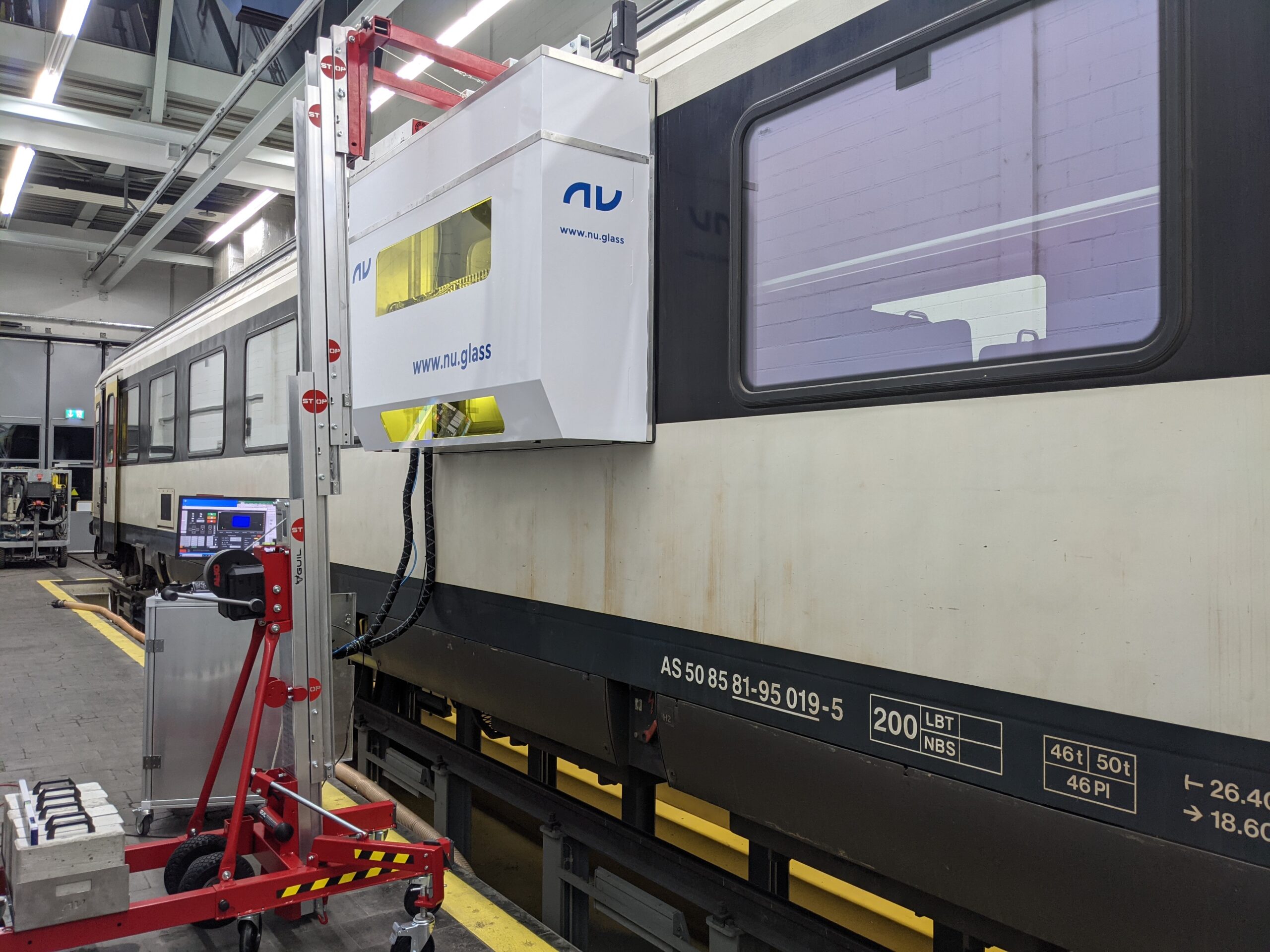
Being able to enjoy a good internet connection when traveling by train is not that common. Working on a laptop or watching the latest episode of our favorite TV show while commuting is often not very comfortable. Although current trains use repeaters, the coating of carriage windows interferes with wireless communication. That’s why nu glass developed a laser treatment to make installed train windows permeable for mobile phone signals.
The solution kills two birds with one stone. On the one hand, it avoids railway companies having to upgrade to better repeaters as soon as a new communications standard comes in. On the other, it doesn’t affect the thermal insulation of train carriages. As long as the system works on windows that are already installed, then there is no need to change them.
After a first trial, the company received their validation from Swisscom – Switzerland’s main communications company – which gave a positive assessment of the signal’s performance.
“The signal that you get inside is the same as the one outside. It differs a little bit because of the glass, but we can’t get rid of that” CEO and founder of nu glass Luc Luc Burnier says jokingly.
What’s more is that the technology can be used with the current production of glass too. This way, the trains of the future will benefit from the technology from day one.
A laser does it all
The portable system works directly on the window pane, a laser then engraves ultra-thin lines – thinner than 25 microns – which allow wavelengths to pass through. The glass is treated in about 15 minutes. There is no need for the window to be unmounted, the device works on the window panes directly, as the laser can be focused on curved surfaces too.
“At the beginning, I started scratching lines in the glass using nothing more than a ruler. If you want to draw ultra-thin lines which have a high resolution, laser technology is the go-to option,” explains Burnier.
Twisting research plans up
The idea for this kind of treatment stemmed from a different kind of research. Nine years ago, Burnier was part of a team at the École Polytechnique Fédérale de Lausanne – EPFL – which was working on improving train insulation.
Burnier: “Heating and cooling systems account for a third of the power used in trains. That’s why we designed a concept of glazing that would double the level of insulation performance. In spite of this, the railway partner we used to work with suggested that our glazing wouldn’t allow mobile phone signals to pass through. Together with Dr. Andreas Schueler – a physicist and my boss at the time – we thought of a way to let waves pass through. And that’s when I started drawing lines on glass.”
So simple, so effective
The principle behind the idea is so simple yet very effective that it was surprising that nobody else came up with it. “The Electromagnetics book presents frequency selective surfaces in the very first pages. It is so fundamental, that it wasn’t that straightforward to think about it,” the engineer adds.
Metallic layers reflect electromagnetic waves. In order to let them pass through, the conductivity of the coating needs to be interrupted. To be able to filter them through, the space in between the gaps must be 10 or 20 times smaller than the wavelength that you want to be able to pass through. Therefore, a grid needs to be sketched on the coating that allows frequencies to pass through. And that’s exactly what Burnier developed.
“When you trace out this grid, you can’t remove too much of the coating, otherwise the level of insulation performance would decrease,” explains Burnier. “It was all about striking a balance between letting frequencies pass and keeping insulation properties unaffected.”
Also read: ‘Fiber optic through the air’ will help railroads in Europe get wireless switches and signals
Saving money

In addition to preserving the insulation of a carriage, getting rid of signal boosters on trains is another crucial aspect of the solution nu glass’ provides. Given that society is transitioning towards 5G connections, signal repeaters on trains will need to be upgraded.
“A single repeater costs about €50,000, and will probably have to be replaced by a better one in a couple of years. What’s more, providing hundreds of people with a fast internet connection while the train is moving isn’t easy – as it keeps connecting from mobile to mobile. It really is sensitive electronics,” Burnier stresses.
In the event that there is a failure, specialized technicians need to check the signal boosters. During a five year period, this kind of maintenance – and the cost of the signal booster- amounts to about 100 million euros for a country as big as Switzerland.
Next stop: scaling up
As an EPFL spin-off, nu glass is raising funds to further develop its system. “Some investors have shown interest in our technology. We are looking forward to establishing the company, signing our first contracts, and expanding across Europe,” says Burnier. The company now has 4 members in its team, but is planning to hire more by the end of 2022.
A second pilot test will take place in April, as nu glass will try its laser treatment on another kind of train. In addition to the partnership with the Swiss Federal Railways – SBB – other railway companies around Europe are also willing to test the system.
As mobile networks infrastructures set to keep improving in upcoming years, network connectivity in trains will invariably benefit from this as well. A laser-drawn grid has got us covered.
Also interesting: Karlsruhe pioneers freight transport in streetcars and light rail vehicles

